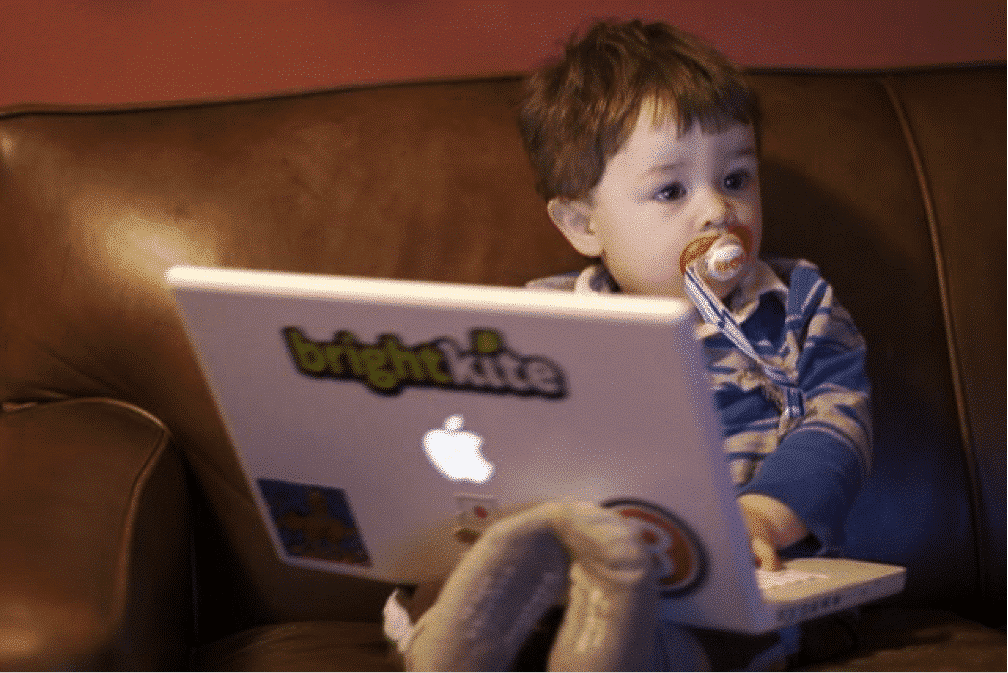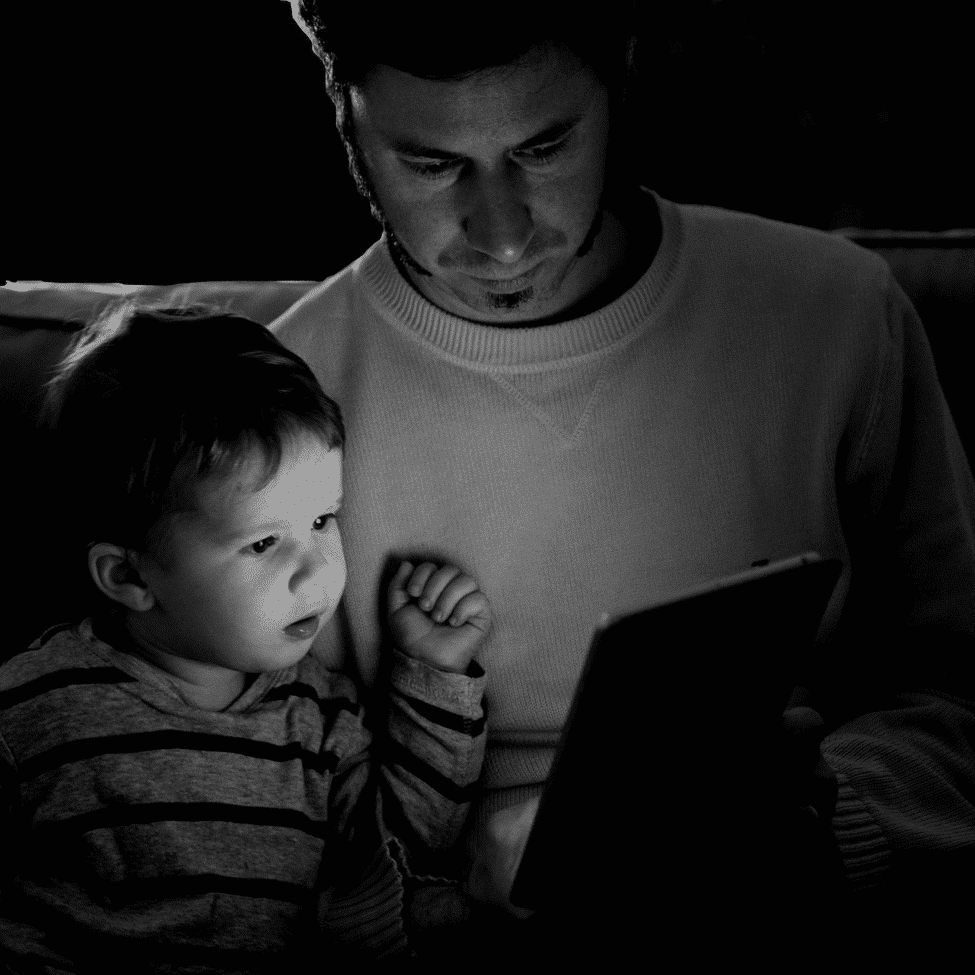
Parenting is seriously hard work, even in the digital age. After all, we not only have to supervise their offline worlds, we must monitor their online worlds as well. Prying little eyes off screens with delicious content is tough stuff. It’s impossible to attend to every tiny aspect of our children’s lives, including what they are exposed to on televisions, computers, smartphones, and tablets. Furthermore, it’s not only screens that interact with our kids. Today’s “connected” and “smart” toys provide data, gather data, and even learn data in order to offer customized, consumable content to keep your child playing (and buying). Fun cartoons, entertaining apps, and talking dinosaurs and Barbies are designed to keep kids happy. Sometimes these activities are so expertly designed kids will even choose these activities over one-to-one time with mom and dad. But we know from Part 2 of the series, sitting your child in front of a screen or smart toy for hours at a time can be detrimental to their intellectual and emotional development. How exactly should we “limit” exposure for “the individual child,” as the American Academy of Pediatrics (AAP) suggested? And what is the “right” way to expose our infants and toddlers to tech and screen media? Let’s take a look at what the experts have to say.
Suggestions from the AAP
Infants and toddlers require one-ton-one, bidirectional interaction with caregivers in order to develop cognitive, language, and social-emotional skills (Radesky & Christakis, 2016). Because their memory and attention skills have not completely developed, they are not able to learn through media in the same manner as they do through interactions with others. The AAP has confirmed that there is limited research on the benefits of media, and that excessive use has negative consequences. Therefore, limitation is key.
Here are some additional guidelines outlined by the AAP:
- Create a family media plan, like our FREE GKIS Connected Family Screen Agreement. This interactive tool allows you to customize screen guidelines for every child in your household, starting as early as 18 months. The AAP discourages use for children under 18 months.
- Avoid solo media use in children age 18-24 months.
- Do not introduce technology early if it is not necessary. When children enter school, they will soon be introduced to the technological world and will adapt quickly.
- Avoid fast-paced programs, apps with lots of distracting or violent content. Test out apps and games before using them with your child.
- Encourage your child to share their feelings or interests when you use media-play together.
- Turn off screens when they are not being used so your child is not able to consume media passively.
- Keep bedrooms, mealtimes, and parent-child playtime screen free. You can even turn on a “Do Not Disturb” option on your iphone to avoid incoming calls or messages from popping up at inconvenient times (Radesky & Christakis, 2016).

Suggestions from the NAEYC
According to the National Association for the Education of Young Children (NAEYC), infant media exposure should be used to facilitate learning (2012). Because infants learn primarily through play with adults, children, and toys, technology tools must be used in the context of these interactions as well. Infants require tools that allow them to freely explore and manipulate their environment, which draws them to games that have buttons, switches, and controls. Tools should also be safe, sturdy, and not easily damaged (NAEYC, 2012).
Here are a few more suggestions and examples:
- Allow your infant/toddler to explore digital materials with you or another adult as a mediator. Sharing technology with your child and interacting with them while doing so allows for increased vocabulary skills, observation of appropriate behaviors with media, literacy, and more.
GKIS Quicktip: Use video-chat to interact with your child to let them explore areas unknown to them (with another adult on the other end). Explain your surroundings to them and introduce them to new ideas.
- Avoid passive screen time. Although some parents believe baby videos calm their child in times of turmoil, there is little research suggesting infants and toddlers learn from watching videos alone. If infants are upset, they need hugs and soothing, not technology.
GKIS Quicktip: Avoid using television programs like Baby Einstein to soothe your child and distract them from the problem. Instead, talk to them, identify the source of their distress, and physically provide your child with a sense of security.
- When appropriate, use technology as an fun, active tool that provides your infant or toddler with access to images or videos of what they may or may not see in their own environment
GKIS Quicktip: Provide images or videos on a tablet of family, friends, animals, toys, or even other children from around the world to expose diversity. As your child looks through these images, explain the pictures to them. Talk to them about the people, animals, or objects and create a story about what they see.
- Incorporate assistive technologies for children with special needs and/or developmental delays.
GKIS Quicktip: For toddlers with Autism Spectrum Disorder, try using GoTalk Pocket. This assistive technology in the form of a remote, works as a communication device for children. Teach your toddler to press the buttons on the remote for what they need. This remote will then verbally project the word, allow for practice of communication skills.

- Track your child’s progress.
GKIS Quicktip: Record your child’s progress with media use by audio or video on your phone or computer. You can even record the entire play-session to determine your child’s interests and abilities to build upon in future sessions (NAEYC, 2012).
Non-Media Alternatives
Although I’ve offered great tech options, it may be best to avoid screen use entirely for education purposes between the ages of 0 to 2.
Here are several universally known and time-withstanding conclusions that we as a concerned GKIS parenting community can agree on:
- Reading to your toddler boosts language ability and strengthens parent-child attachment.
- Talking to your baby throughout daily activities improves language and emotional development and overall intellectual functioning.
- Singing, playing, and smiling are never discouraged when engaging with your child (Hoecker, 2014). Nothing in your life will translate into more precious dividends.

I’m the mom psychologist who will help you GetYourKidsInternetSafe.
Onward to More Awesome Parenting,
Tracy S. Bennett, Ph.D.
Mom, Clinical Psychologist, CSUCI Adjunct Faculty
GetKidsInternetSafe.com
Works Cited
GoTalk Pocket – Go Talk Pocket. (n.d.). Retrieved from http://www.autism-products.com/ProductDetails.asp?ProductCode=1298886&gclid=CNSUzq3K49ACFQ9EfgodvKsPyA
Hoecker, J. L., M.D. (2014, April 12). Infant and toddler health. Retrieved from http://www.mayoclinic.org/healthy-lifestyle/infant-and-toddler-health/expert-answers/baby-einstein/faq-20058099
NAEYC. (2012). Technology and Young Children. Retrieved from https://www.naeyc.org/content/technology-and-young-children/infants-and-toddlers
Radesky, J., & Christakis, D. (2016). Media and Young Minds COUNCIL ON COMMUNICATIONS AND MEDIA. Pediatrics, 138(5). doi:10.1542/peds.2016-2591
Photo Credits
A Boy and His Mac by Tom Carmony, BY CC 2.0
Concentrazione by Mbeo, BY CC 2.0
Happy Mother’s Day by Elvis Kennedy, BY CC 2.0
Don't worry, we will never spam you.









